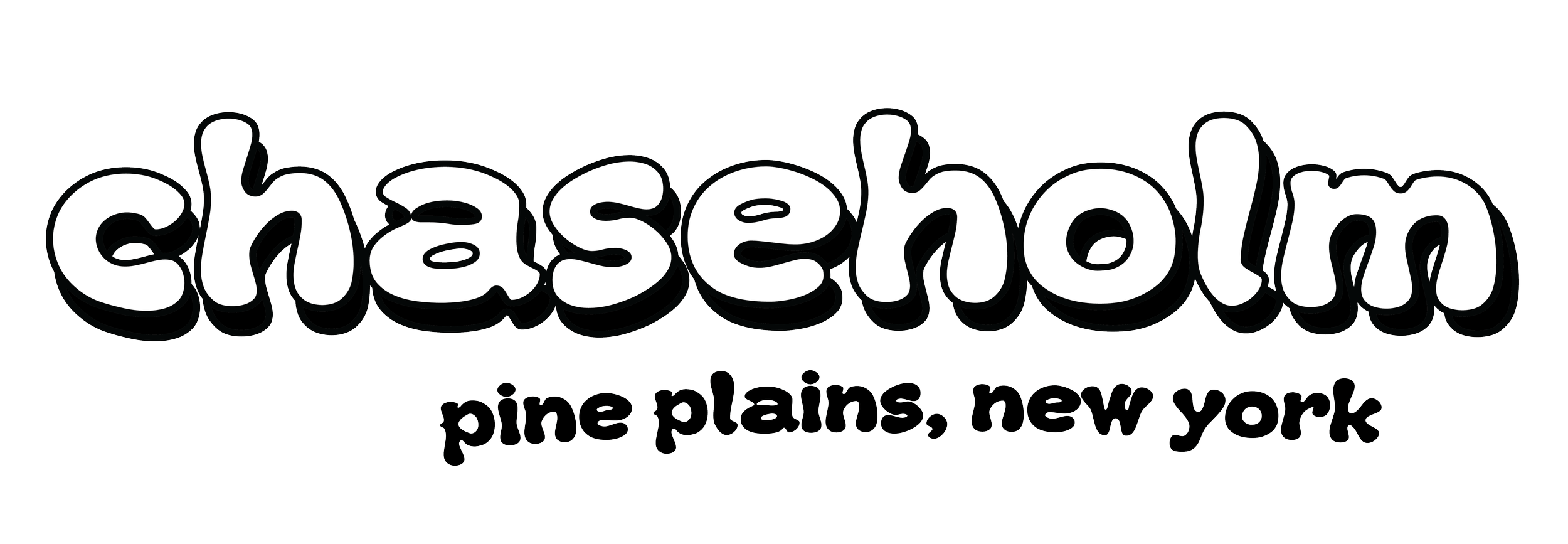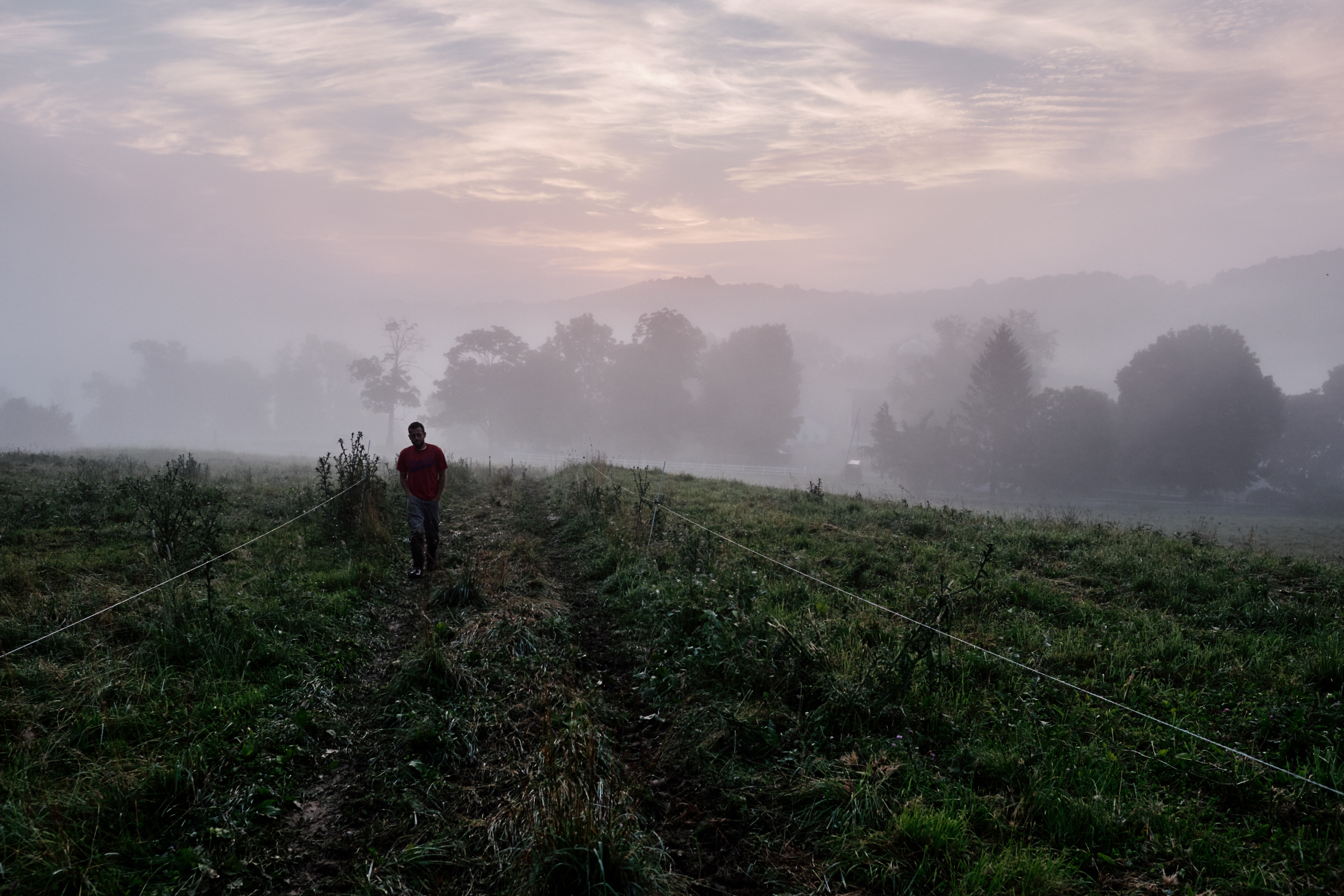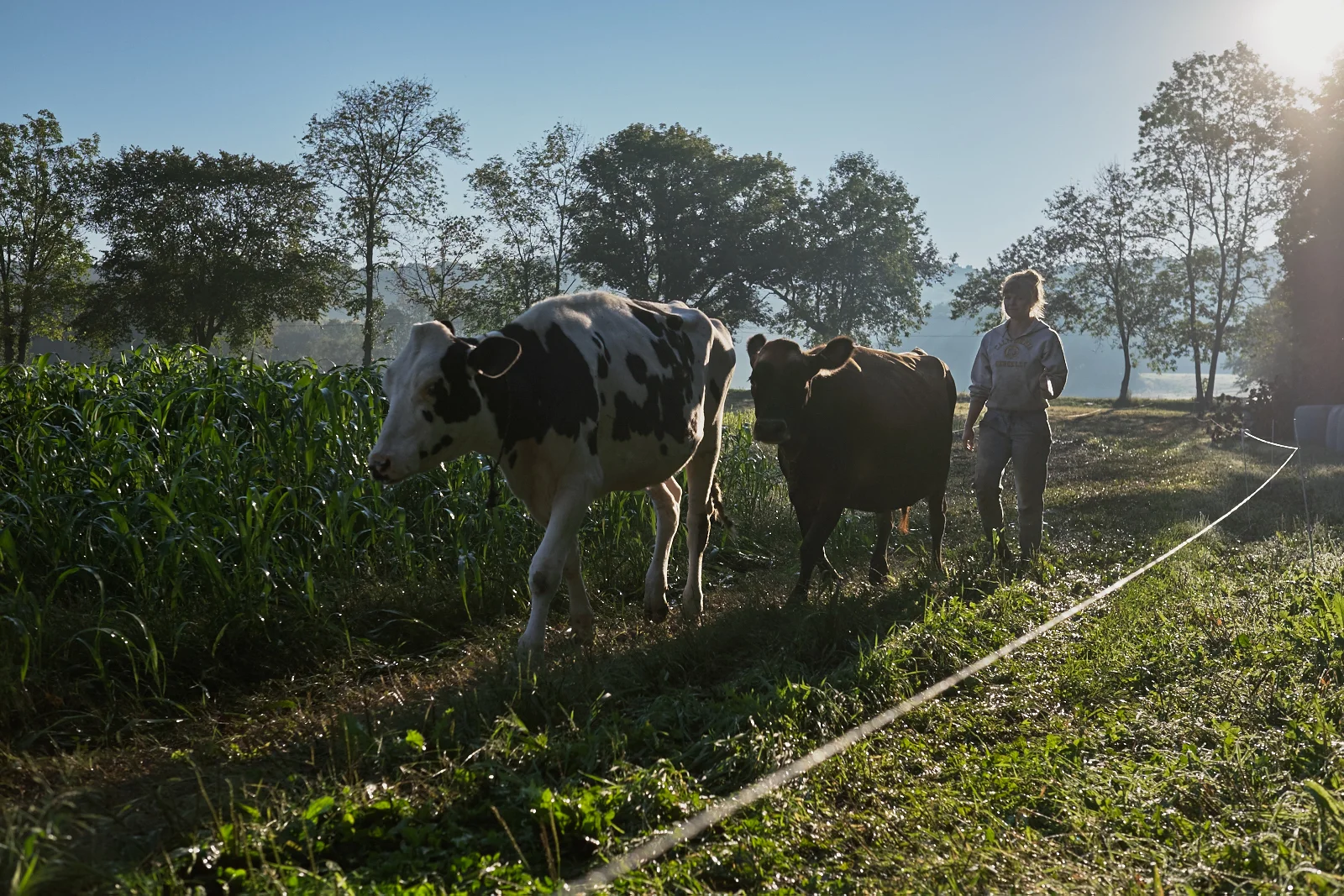Our cows spend their lives eating what cows have eaten for millennia. As babies they gorge themselves on milk with a growing quantity of grass as they get bigger and their bellies mature. We wean them onto pasture between 6-10 months of age. From this time on they are 100% Grass-Fed ... and we are grass farmers.
The principles of grass farming require that the farm system be thought about in an holistic way. We work to create an active and healthy soil microbiology so that soil can support healthy plants that can be grazed by cows. How do we create an active soil microbiology? By grazing cows!
“Grass farming appealed to me instantly.”
It's a complex and also delightfully simple (no herbicides, pesticides or synthetic fetrilizers!) cycle. The cows help to stimulate plant growth both with their manure and tromping as well as their pulling bites that in effect prune the grass canopy, encouraging fresh growth to begin. Growing plants photosynthesize energy from the sun and push it to their roots to transact with the living soil around their roots.
REGENERATIVE AGRICULTURE
Our increasing understanding of soil biology gives us hope that agriculture can be regenerative, instead of merely sustainable. The carbon dioxide that plants draw in during photosynthesis is converted into sugars, a portion of which is exuded by the roots into the soil to attract and feed microbial life. Healthy soil is teeming with bacteria that gobble up the sugary root exudates. (They say a teaspoon of living soil contains hundreds of millions of microbes and many thousands of species.) Protozoa eat and excrete these bacteria, giving us the finest of fertilizers: protazoa poop is replete with plant-soluble nitrogen and other nutrients. Vibrant soil is also riddled with fungal hyphae that break down complex carbon chains and mobilize nutrients across their mycellial filaments.
Active soil biology is the only way humans can build humus, the long chain carbons in our soils that hold onto minerals and water. This is an integral part of the carbon cycle, which has been knocked out of whack as evidenced by rising carbon dioxide levels in the atmosphere. Regenerative farming practices can help repair the cycle, pulling carbon from the air, and storing it in our perennial pastures. With this intent we:
- Never use synthetic fertilizer, herbicides or pesticides: Repeatedly drenching soils with chemical salts has led to a shit storm of unintended consequences, both in the soil biology and downstream. Diminished soil biology not only leads to a reliance on chemical inputs (on the hamster wheel of modern industrial agriculture), but also reduces the nutrient-density of the food. We never use them.
- Minimize tillage: The churn and disturbance of tillage burns up the carbon in the soil, kills fungi, and leads to compaction and erosion. Dairy farming has traditionally relied heavily on cropping, growing grains and silage to meet the higher nutritional requirements of milk cows. We also grow crops (forage, i.e., non-grain crops) at Chaseholm Farm, but consider it an interim measure. We keep tillage to a minimum and use soil conservation practices like cover cropping. As our pastures become more productive we hope to convert all of our land to perennial pasture.
- Maximize photosynthesis: Cows and grass are powerful allies in our efforts to regenerate soils. A cow's rumen is a giant fermentation vat, giving her the ability to digest cellulose. Grasses are cellulose-rich plants which emerge from their winter dormancy every spring and thrive in our environment without chemical inputs or tillage. Every grass blade is a solar panel, harvesting energy to feed us and the soil. We maximize the amount of grass that we grow each year by using intensive, adaptive rotational grazing.
The word "grass" is a synecdoche signifying a bevy of plants ... not just grasses, but clovers and forbs and even the gosh-darn thistle that mines the deepest nutrients with its powerful roots. Each plant plays a role in our perennial pastures.
farmscape ecology
During the growing season, the rhythm of each day is set by our grazing plan. We use electric fencing and some brain power to coordinate which plot of land the cows will graze that day and when and where hay will be cut to carry the herd through the winter. By giving the cows a slice of grass instead of the entire field, we focus their impact, while letting the remainder of the farm sufficient time to fully recover. This cycle of stress and rejuvenation mimics the impact of the great herds of herbivores on the earth's grasslands. Predators ensured that the herds stayed tightly bunched, and the grazers were constantly moving onto fresh unfouled swaths of grass. This dynamic is what built the incredible soil wealth found in the American prairies (soil capital that we continue to draw-down every time we till and plant a new crop of soybeans or wheat). We intend to replicate the impact of the great migratory herds, but in miniature, on Chaseholm's pastures.
We get more rain than the prairies, and our climax ecosystem may be a forest instead of a grassland. Nevertheless, keeping these grassy fields tucked among the forested hillsides contributes to a more vibrant ecosystem. The interaction between field and forest, hillside and swamp, creates niches that invite more life. Rotational grazing ensures there is vegetation at all stages of growth, allowing the insects and the birds and the critters of the fields to share this space with us. As part of our holistic farm plan we nurture this ecosystem and revel in the life all around us.
farming at a human scale
Small dairies are struggling. Dairy prices in the grocery store don't cover the true cost of growing food in a way that respects the land, the cows and the farmers. It hurts to see because this way of life deserves protecting. The interaction between a farmer and her land and animals can be transformative / regenerative / powerful for all involved. Chaseholm Farm is hilly and open. It is ideally suited to cows and grass, and farmers that love to care for them. So we will continue to farm here, growing food that reflects our values. We will not relinquish the power inherent in the decisions of how our food is grown.
Resources
If you would like to learn more about how we farm, we recommend the following resources:
- The book Holistic Management: A Commonsense Revolution to Restore our Environment. Allan Savory's ideas are encapsulated in his TED Talk. Through careful management of the ways that cows graze you can improve the grass species, the soil bacteria and the mineral and water cycles. We've seen it to be true of our farm, though we still have a lot of work to do.
- The book The Art and Science of Grazing written by the amazing Sarah Flack!
- Gabe Brown is a pioneer in complex cover cropping systems and how to build soil health.









